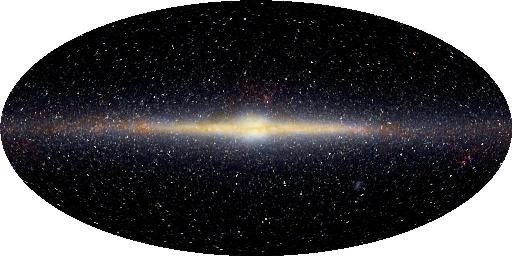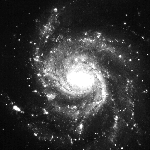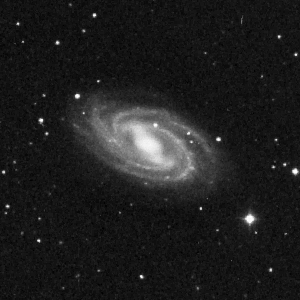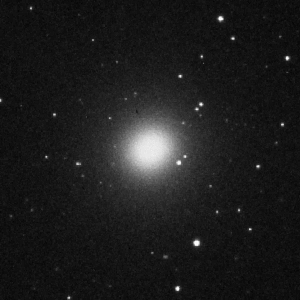Milky Way Galaxy

|
|---|
- open clusters
- globular clusters
- gas and dust
- O and B stars
- all of the above
- old K and M stars
- open clusters
- O and B stars
- gas and dust
- all of the above
- open clusters
- K and M stars
- O and B stars
- gas and dust
- all of the above
- mapping the distribution of stars in the galaxy.
- mapping the distribution of globular clusters in the galaxy.
- looking at the shape of the "milky band" across the sky.
- looking at other nearby spiral galaxies.
- mapping the distribution of gas clouds in the spiral arms.
- old, red, and dim and have much more heavy element material.
- young, red, and dim and have fewer heavy elements.
- old, red, and dim and have fewer heavy elements.
- young, blue, and bright and have much more heavy element material.
- old, red, and bright and have fewer heavy elements.
- do not have to pass through the plane of the galaxy.
- are relatively uniform to each other.
- are elliptical but orbiting in the same direction.
- are elliptical, with random orientation.
- do not have to be around the galactic center.
Galaxies
- the one that is closest to us
- the one that is farthest away
- the one that is bluest in color
- the one that is reddest in color
- the one that most resembles an elliptical.

| 
| 
| 
|
|---|---|---|---|
- barred spirals
- irregulars
- spirals
- ellipticals
- lenticulars
- ellipticals
- spirals
- barred spirals
- irregulars
- lenticulars
- barred spirals
- ellipticals
- spirals
- irregulars
- pinwheel galaxies
- Cepheids are supermassive stars that will soon go supernovae.
- Cepheids are a type of young galaxy that helps us understand how galaxies form.
- They can be used as "standard candles" for distance measurements.
- Cepheid variables are stars that vary in brightness because they harbor a black hole.
- None of the above explains why they are important.
- What is the most accurate way to determine the distance to a nearby star?
- What is the most accurate way to determine the distance to a nearby (10 Mpc or so) galaxy?
Cosmology
- the precise density needed to eventually reverse the expansion of the Universe
- the minimum density that a universe needs in order to form stars
- the minimum density that a universe needs in order to form galaxies
- the average density of the space between galaxies and clusters of galaxies
- the minimum density that a universe needs in order to create helium from hydrogen
- 2.8 km/s
- 70 km/s
- 280 Mpc/s
- 28,000 km/s
- 0.07 times the speed of light
- 100 pc
- 1 Mpc
- 100 Mpc
- 10,000 km
- 1,000,000 light years
- Hydrogen and helium filled all of space, and all the universe was exactly the same density.
- The universe was composed originally only of hydrogen, and all the other elements came from stars.
- Hydrogen and helium filled all of space, and certain regions of the universe were slightly denser than others.
- The beginning of the universe is modeled after a humongous supernova explosion.
- The universe has always been expanding, and denser areas contracted to form the first stars.
- the extremely bright center of a distant galaxy, thought to be powered by a massive black hole
- another name for very bright stars of spectral type O
- a starlike object that actually represents a bright patch of gas in the Milky Way
- a very large galaxy thought to be formed by the merger of several smaller galaxies, typically found in the center of a galaxy cluster
- a specialized astronomical instrument for observing distant stars.
- Massive black holes existed only when the universe was young and no longer exist today.
- Active galactic nuclei can form only at large distances from the Milky Way.
- The jets seen in many active galactic nuclei must cause them to move far away from us.
- Active galactic nuclei tend to become less active as they age.
- observations of some elliptical galaxies with stars and gas clouds in their cores that orbit differently from the other stars in the galaxy
- observations of giant elliptical galaxies at the center of dense clusters that may have grown by consuming other galaxies
- the fact that elliptical galaxies dominate the galaxy populations at the cores of dense clusters of galaxies
- observations of some elliptical galaxies surrounded by shells of stars that probably formed from stars stripped out of smaller galaxies
- all of the above
- The Planck era was the time before the Big Bang, and we cannot describe what happened before that instant.
- We do not understand the properties of antimatter.
- We do not yet have a theory that links quantum mechanics and general relativity.
- It was a time period from which we cannot receive radiation.
- We do not know how much energy existed during that time.
- Except for the small amount of heavy elements produced later by stars, the chemical composition of the universe is the same now as at the end of the era of nucleosynthesis.
- All the elements except hydrogen were produced after the era of nucleosynthesis.
- We can study the processes that occurred during the era of nucleosynthesis to determine how most of the elements in the universe were created.
- By knowing how much matter was created during the era of nucleosynthesis, we can determine whether the universe is open or closed.
- We can observe spectra from this era to determine what the primordial mix of the elements was at the beginning of the universe.
- The cosmic background radiation is expected to look essentially the same in all directions, and it does.
- The cosmic background radiation is expected to have tiny temperature fluctuations at the level of about 1 part in 100,000. Such fluctuations were found in the COBE data.
- The cosmic background radiation is expected to have a perfect thermal spectrum, and observations from the COBE spacecraft verify this prediction.
- The cosmic background radiation is expected to have a temperature just a few degrees above absolute zero, and its actual temperature turns out to be about 3 K.
- The cosmic background radiation is expected to contain spectral lines of hydrogen and helium, and it does.
- It has a temperature of about 3 degrees K above absolute zero.
- It appears essentially the same in all directions (it is isotropic).
- It was discovered by Penzias and Wilson in the early 1960s.
- It is the result of a mixture of radiation from many independent sources, such as stars and galaxies.
- It had a much higher temperature in the past.
- The spectrum of pure hydrogen is a perfect thermal radiation spectrum.
- It doesn't predict that the cosmic background radiation should have a perfect thermal radiation spectrum.
- The light from all the stars and gas in the sky averaged over the entire universe is a perfect thermal radiation spectrum.
- The spectrum of 75% hydrogen and 25% helium is a perfect thermal radiation spectrum.
- The background radiation came from the heat of the universe, with a peak corresponding to the temperature of the universe.
- The measurements suggest that the universe may be shrinking rather than expanding.
- The measurements indicate that the universe is at least 30 billion years old, meaning that more than 10 billion years passed between the Big Bang and the formation of the first stars and galaxies.
- The measurements suggest that the universe may not be expanding at all.
- The data suggest that the expansion rate varies widely in different parts of the universe.
- The measurements suggest that the expansion may actually be accelerating, rather than slowing under the influence of gravity.
- What is antimatter?
- How were particle-antiparticle pairs created in the early universe?
- How were they destroyed?
- How do we know there was a small but significant excess of matter over anti-matter in the
early universe?